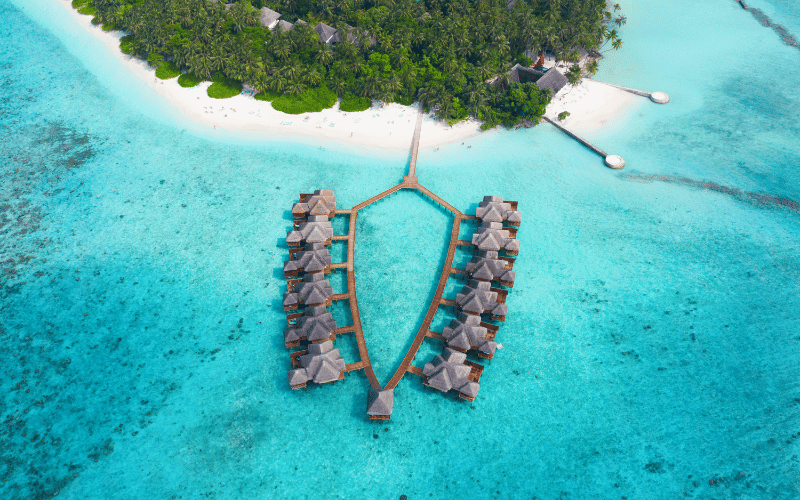
MALDIVES
Join us on a journey to the Maldives, where each island tells a tale of its own. This blog highlights the beauty of their beaches and the overwater bungalows that hover above the blue waters. We guide you through hidden lagoons, and brilliant landscapes, and offer tips on how to enjoy the tranquility of this unique island paradise.
Quick Facts About Maldives
| Category | Facts |
|---|---|
| Location | Indian Ocean, southwest of Sri Lanka and India. |
| Borders | None (Island nation). |
| Climate | Tropical monsoon, with warm temperatures year-round. |
| Population | Approximately 521,000 (2023). |
| Official language | Dhivehi. |
| Currency | Maldivian Rufiyaa (MVR). |
| Capital | Malé. |
| Major Industries | Tourism, fishing, boatbuilding, and agriculture. |
| Religion | Predominantly Islam (Sunni). |
| Time Zone | GMT+5. |
| National Symbols | Coconut palm, Yellowfin tuna, and the White, Red, and Green flag. |
Geography and Environment
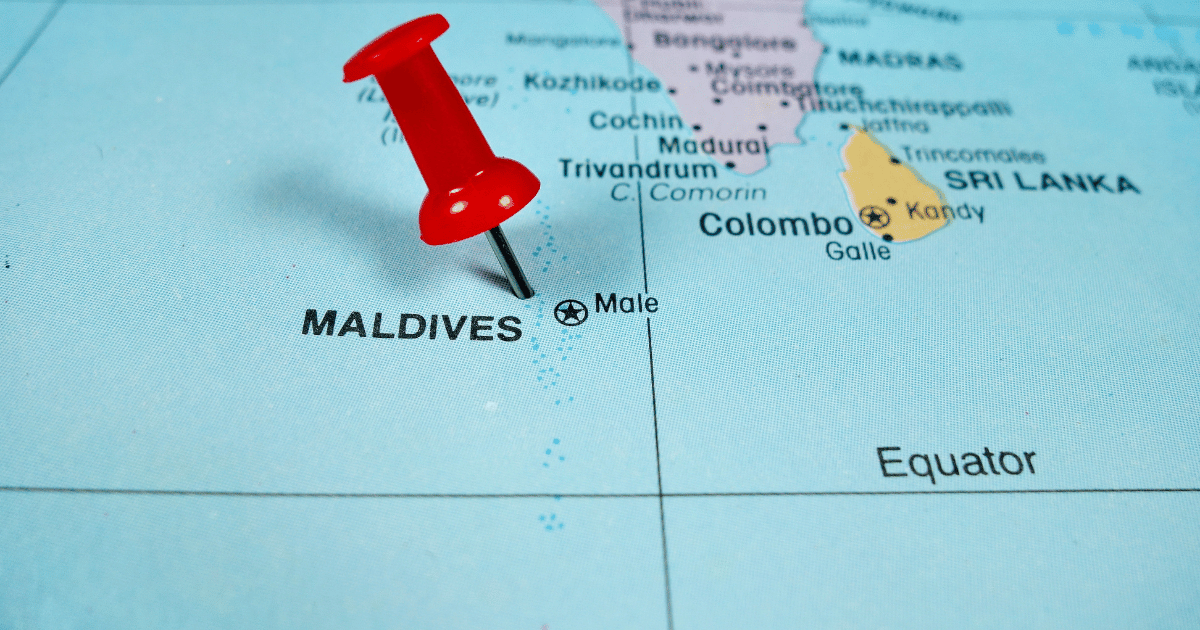
Major Physical Features
The Maldives is made up of 26 atolls that consist of over 1,000 coral islands. These islands are low-lying, with most just 1.5 meters above sea level. The coral reefs surrounding the islands are among the most diverse in the world. This makes this tropical haven a top spot for marine biodiversity. You’ll find that these reefs play a crucial role in protecting the islands from erosion and serve as a habitat for a wide variety of marine life.
The islands are surrounded by shallow lagoons with crystal-clear turquoise waters and bordered by white sandy beaches. These features are stunning and also vital to the Maldives’ tourism industry. Tourists from all over the world come to enjoy these natural wonders, which makes them a key part of the country’s economy. However, the low elevation also means the Maldives is extremely sensitive to rising sea levels, which threatens its very existence.
Seasonal Variations
The Maldives has two main monsoon seasons. From May to October, the southwest monsoon, known locally as Hulhangu, brings heavy rains and strong winds. The northeast monsoon, called Iruvai, runs from November to April and brings dry, sunny weather with calm seas. Despite these variations, the Maldives enjoys warm temperatures year-round, usually between 26°C and 31°C. This consistent warmth makes it a popular destination for tourists throughout the year, whether they prefer the lively monsoon season or the calmer, sun-filled months.
Natural Resources
The Maldives relies heavily on its rich marine life. Fishing, especially for tuna, is a major industry that supports the local economy. The coral reefs are home to a wide variety of fish, sharks, and rays, which not only sustain the fishing industry but also attract tourists for activities like diving and snorkeling. Coral and sand are other important natural resources, with coral crucial for island formation and sand used in construction. These resources, however, need careful management to avoid depletion and environmental damage.
Environmental Challenges
The Maldives faces significant environmental challenges. Rising sea levels, driven by climate change, pose a serious threat to the country. Many of the islands could become uninhabitable within this century if sea levels continue to rise. This makes the preservation of coral reefs and mangroves, which act as natural barriers, crucial for the atoll nation’s survival.
Coral bleaching, caused by higher sea temperatures, is another major issue. When coral reefs bleach, they lose their color and health, which affects marine life, tourism, and fishing. Waste management is also a critical problem. The Maldives generates a lot of waste, much of which ends up in the ocean or in landfills, polluting the environment and harming marine life. These challenges require ongoing efforts to protect the country’s natural beauty and resources.
History and Culture
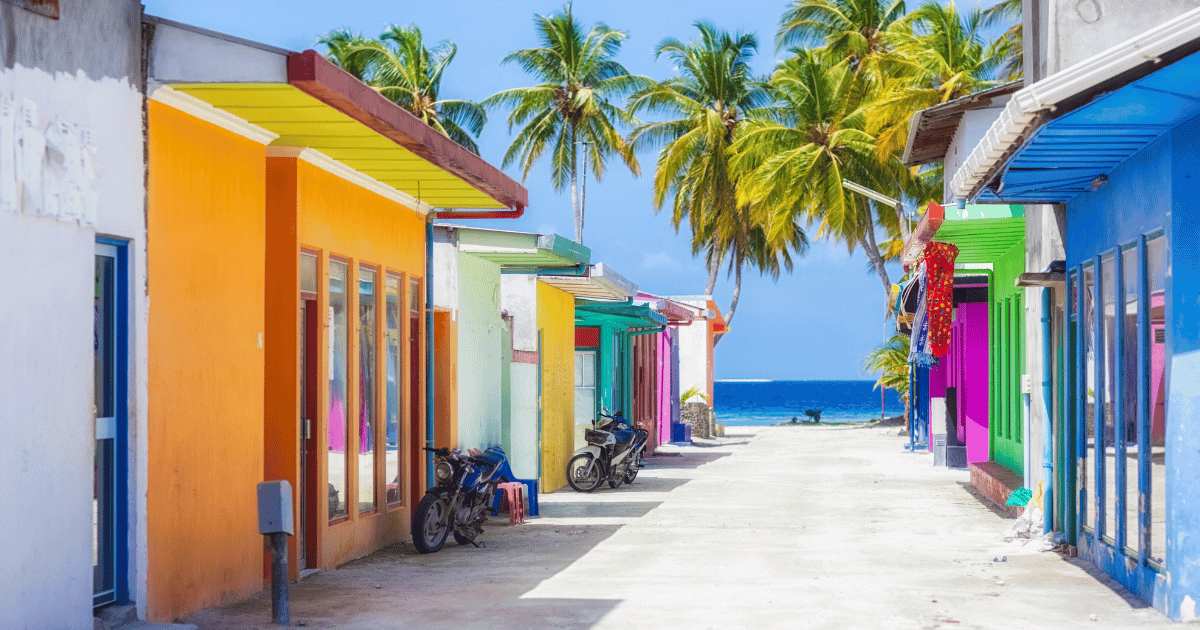
Historical Background
The history of the Maldives stretches back over 2,500 years. The first settlers likely came from southern India and Sri Lanka. They established a vibrant trading network across the Indian Ocean, making the turquoise oasis a key stop for traders moving between Africa, the Middle East, and Southeast Asia. This early history laid the foundation for the Maldives’ diverse cultural influences.
In 1153 AD, the Maldives underwent a significant transformation when it converted to Islam. This event marked the start of a new era in Maldivian history, deeply influencing the country’s culture, laws, and daily life. Islam became the dominant religion and remains so to this day. The marine sanctuary’s adherence to Islam is central to its national identity, shaping everything from the legal system to social customs.
Colonial powers, including the Portuguese, Dutch, and British, influenced the Maldives over the centuries. But, they managed to maintain a considerable degree of autonomy. In 1887, it became a British protectorate, meaning the British handled the Maldives’ defense and foreign affairs, while the Maldivian sultans continued to govern internally. They gained full independence from the United Kingdom on July 26, 1965, marking the beginning of its modern state.
Key Historical Events
1153 AD: Conversion to Islam
The conversion to Islam in 1153 AD is a defining moment in Maldivian history. This shift to Islam significantly influenced the country’s culture, governance, and legal system, establishing the Maldives as an Islamic nation. The conversion shaped the Maldives’ national identity, which remains deeply rooted in Islamic traditions.
1887: British Protectorate
In 1887, the Maldives became a British protectorate. This arrangement provided the Maldives with military protection and managed foreign relations, but it allowed the Maldivian sultans to retain control over internal matters. This period of British influence lasted until the Maldives gained independence in 1965.
1965: Independence
The Maldives gained full independence from Britain on July 26, 1965. This event marked a new chapter in the Maldives’ history, leading to significant developments in governance, the economy, and infrastructure. The country embarked on a journey of modernization, laying the groundwork for future growth and prosperity.
1972: Start of Tourism
In 1972, the opening of the first tourist resort in the Maldives signaled the beginning of the country’s transformation into a global tourism hub. Tourism quickly became the Maldives’ primary industry, driving economic growth and bringing international recognition to this island nation. Today, tourism is a major contributor to the Maldives’ economy.
2008: First Democratic Elections
In 2008, the Maldives held its first multi-party democratic elections, a significant step towards establishing a democratic system of governance. Mohamed Nasheed became the first democratically elected president. His administration introduced reforms aimed at modernizing the country and addressing environmental challenges, setting a new course for the Maldives’ future.
What’s Unique About Maldives
Marine Life and Underwater Wonders
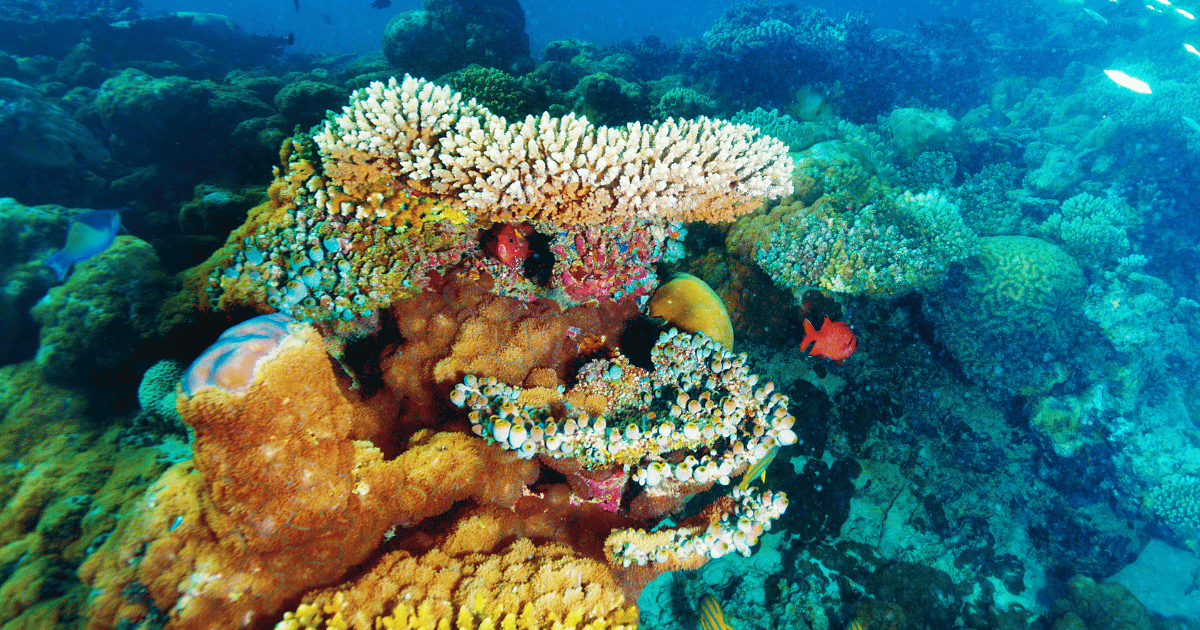
Coral Restoration Projects
The Maldives leads in coral restoration. Resorts and environmental groups team up to repair damaged reefs. They grow coral fragments and transplant them to areas where reefs need help. This work helps keep marine biodiversity strong. Tourists who care about the environment often visit to see these projects in action.
Manta Ray Migration
If you love marine life, the Maldives is a top spot to see manta rays. From May to November, you can visit Hanifaru Bay, where manta rays gather to feed. This area becomes a beautiful underwater scene, perfect for snorkeling and diving. Watching these gentle giants glide through the water is an unforgettable experience that draws visitors from around the world.
Whale Shark Encounters
The Maldives offers a rare chance to see whale sharks year-round. These massive fish, the largest in the world, are often spotted in the South Ari Atoll. Many travelers come here just to swim alongside these gentle creatures. It’s a must-do for anyone passionate about marine life. The consistent sightings make this oceanic retreat a top destination for those looking to check whale sharks off their bucket list.
Sustainable Tourism and Eco-Resorts
The World’s First Nation to Commit to Carbon Neutrality
The Maldives made a bold move by pledging to become carbon neutral by 2020. This goal has pushed the country to invest heavily in renewable energy, especially solar power. The commitment has also inspired the creation of eco-friendly resorts across the islands. These efforts show the country’s dedication to fighting climate change while maintaining its status as a top tourist destination.
Floating Solar Power Plants
To tackle its limited land resources, the south asian archipelago is using floating solar power plants. These innovative systems generate clean energy on water, saving valuable land space. The floating solar panels are part of the country’s broader plan to reduce its carbon footprint. This approach not only provides renewable energy but also supports the Maldives’ goal of sustainability.
Marine Protected Areas
The Maldives has set up several Marine Protected Areas (MPAs) to safeguard its rich marine life. In these zones, fishing and other potentially harmful activities are restricted. This protection helps ensure that species like sea turtles and manta rays have safe habitats. The MPAs are crucial for conserving the Maldives’ vibrant underwater ecosystems, which are a big draw for eco-tourists.
Eco-Luxury Resorts
Eco-luxury is a big part of the Maldives’ tourism appeal. Many resorts here combine high-end amenities with sustainable practices. These resorts often have organic gardens, robust waste reduction programs, and marine conservation efforts. Staying at these eco-friendly resorts allows you to enjoy luxury while minimizing your environmental impact.
Cultural and Traditional Practices
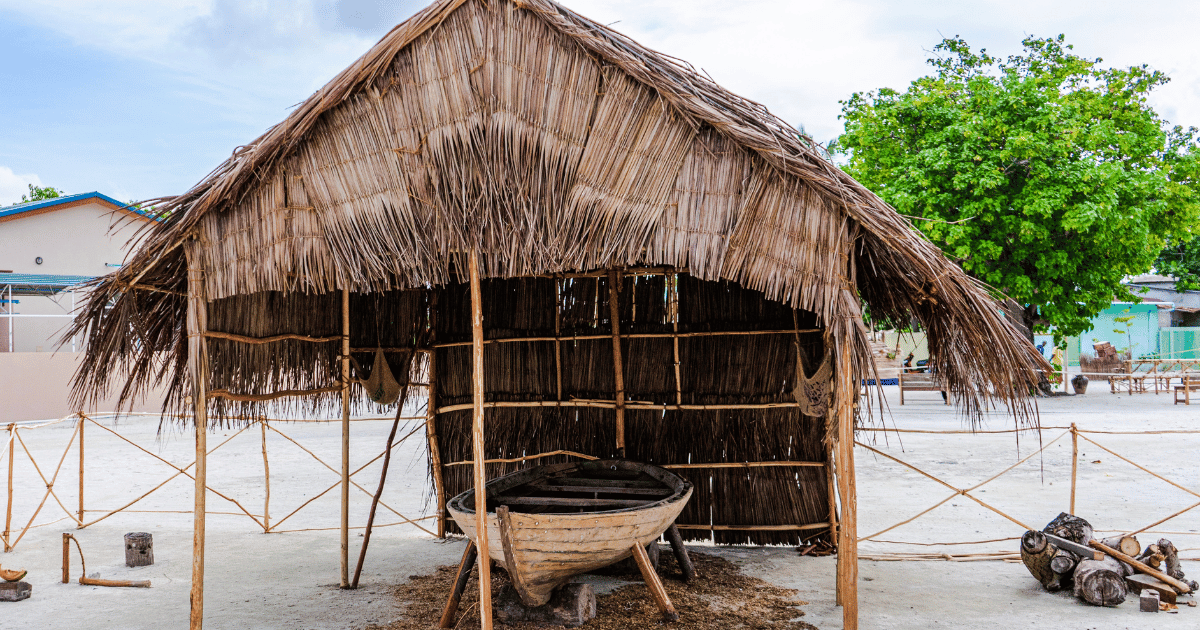
Traditional Maldivian Music and Dance – “Boduberu”
“Boduberu” is a key part of Maldivian culture. It dates back to the 11th century and involves rhythmic drumming and singing. You’ll often see “Boduberu” performances during festivals and celebrations. It’s more than just music; it’s a deep-rooted tradition that connects the Maldivian people to their heritage.
Maldivian Dhoni Boats
The “Dhoni” is a traditional Maldivian boat. Originally, it was used for fishing. Today, it’s a symbol of the country’s maritime history. These boats are handcrafted and still in use, not just for fishing but also as luxury vessels for tourists exploring the islands. The “Dhoni” is a link between the Maldives’ past and its present.
Cultural Significance of “Ganduvaru” Palaces
“Ganduvaru” palaces offer a glimpse into the Maldives’ royal history. These structures, built from coral stone and wood, were once the residences of Maldivian royalty. They reflect the unique architectural style of the Maldives. Visiting these palaces allows you to connect with the island’s rich cultural past.
The Maldives’ Unique Cuisine
Maldivian cuisine is a blend of influences from India, Sri Lanka, and the Arab world. Seafood is central to the diet, with dishes like “Garudhiya,” a fish soup, and “Mas Huni,” a mix of tuna and coconut, being staples. Tasting these dishes gives you an authentic experience of the Maldives’ culinary heritage.
Environmental Vulnerabilities and Adaptations
Sea Level Rise and Island Relocation Plans
The Maldives faces a serious threat from rising sea levels. The government has developed plans to relocate communities from the most vulnerable islands. This is part of a long-term strategy to ensure the safety and survival of the Maldivian people. It’s a crucial step in adapting to climate change.
Artificial Islands and Land Reclamation
To address land scarcity, the Maldives has started building artificial islands. Hulhumalé, near the capital Malé, is a prime example. This man-made island is designed to house a growing population and serve as a hub for tourism and business. It shows how the Maldives is adapting to its environmental challenges.
Floating Cities Initiative
The Maldives is exploring floating cities as a way to adapt to rising sea levels. These futuristic developments aim to create sustainable living spaces that can withstand climate change. It’s an innovative approach that reflects the Maldives’ commitment to finding new solutions to environmental threats.
Mangrove Reforestation
Mangroves are vital for protecting the Maldives’ coastlines from erosion. The country has launched mangrove reforestation projects to strengthen these natural barriers. These efforts support biodiversity and highlight the importance of restoring ecosystems to protect against environmental damage.
Maldives Guides
Select where you want to go, and you will be taken to the appropriate information and reviews. With these guides, we are confident that you have the optimal source of information to find your next dream destination.

